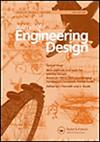A system modeling process based on SysML to support data consistency across system requirement, function, and solution model layers
IF 3.4
2区 工程技术
Q1 ENGINEERING, MULTIDISCIPLINARY
引用次数: 1
Abstract
Model-Based Systems Engineering (MBSE) is a popular system engineering development method focusing on digital models as the primary mean of information exchange to improve communication across disciplines. To implement MBSE, the system model needs to be created to represent systems at different layers of abstraction, such as requirements, functional architectures, and solution designs throughout the development phase. Although many studies have mentioned the need to pay attention to the traceability between different layers of system models, there is still a lack of an automated system modeling process. This can lead to inefficiencies and even errors during the system modeling process. A semi-automated system modeling process based on Systems Modeling Language (SysML) is presented to overcome the issue. This work elaborates on a formalised modeling mechanism based on SysML elements to aid system engineers in system modeling with a function-oriented architecture. This work demonstrates and evaluates the proposed process by developing a wind turbine (WT) system model. The contribution of this study is that it realizes the semi-automatic top-down system modeling process. This ensures data inheritance and consistency between different system model layers of abstraction. It also reduces manual efforts and improves the efficiency of the system modeling process.基于SysML的系统建模过程,支持跨系统需求、功能和解决方案模型层的数据一致性
基于模型的系统工程(MBSE)是一种流行的系统工程开发方法,其重点是将数字模型作为信息交换的主要手段,以改善跨学科的沟通。为了实现MBSE,需要创建系统模型来表示在不同抽象层的系统,例如整个开发阶段的需求、功能体系结构和解决方案设计。虽然很多研究都提到需要注意系统模型不同层之间的可追溯性,但是仍然缺乏一个自动化的系统建模过程。这可能导致系统建模过程中的效率低下甚至错误。针对这一问题,提出了一种基于系统建模语言(SysML)的半自动化系统建模过程。这项工作详细阐述了基于SysML元素的形式化建模机制,以帮助系统工程师使用面向功能的体系结构进行系统建模。本工作通过开发风力涡轮机(WT)系统模型来演示和评估所提出的过程。本研究的贡献在于实现了自顶向下的半自动系统建模过程。这确保了不同系统模型抽象层之间的数据继承和一致性。它还减少了手工工作,提高了系统建模过程的效率。
本文章由计算机程序翻译,如有差异,请以英文原文为准。
求助全文
约1分钟内获得全文
求助全文
来源期刊

Journal of Engineering Design
工程技术-工程:综合
CiteScore
5.00
自引率
33.30%
发文量
18
审稿时长
4.5 months
期刊介绍:
The Journal of Engineering Design is a leading international publication that provides an essential forum for dialogue on important issues across all disciplines and aspects of the design of engineered products and systems. The Journal publishes pioneering, contemporary, best industrial practice as well as authoritative research, studies and review papers on the underlying principles of design, its management, practice, techniques and methodologies, rather than specific domain applications.
We welcome papers that examine the following topics:
Engineering design aesthetics, style and form-
Big data analytics in engineering design-
Collaborative design in engineering-
Engineering concept design-
Creativity and innovation in engineering-
Engineering design architectures-
Design costing in engineering
Design education and pedagogy in engineering-
Engineering design for X, e.g. manufacturability, assembly, environment, sustainability-
Engineering design management-
Design risk and uncertainty in engineering-
Engineering design theory and methodology-
Designing product platforms, modularity and reuse in engineering-
Emotive design, e.g. Kansei engineering-
Ergonomics, styling and the design process-
Evolutionary design activity in engineering (product improvement & refinement)-
Global and distributed engineering design-
Inclusive design and assistive engineering technology-
Engineering industrial design and total design-
Integrated engineering design development-
Knowledge and information management in engineering-
Engineering maintainability, sustainability, safety and standards-
Multi, inter and trans disciplinary engineering design-
New engineering product design and development-
Engineering product introduction process[...]
 求助内容:
求助内容: 应助结果提醒方式:
应助结果提醒方式:


